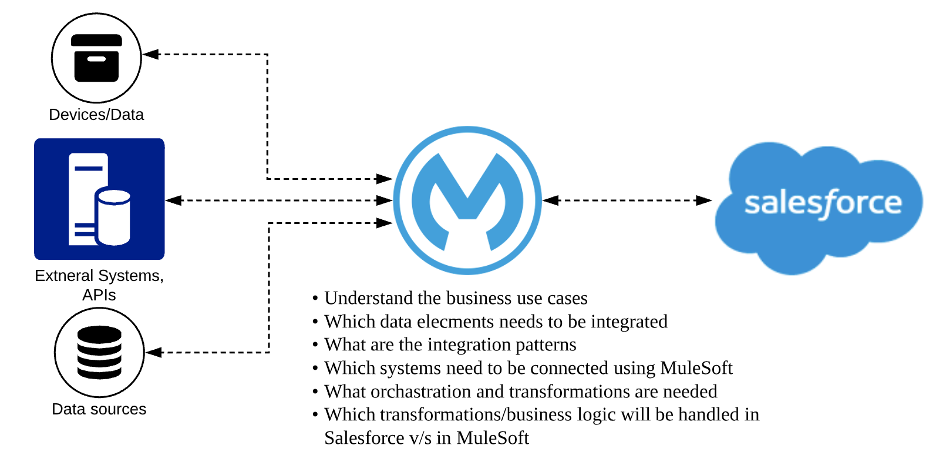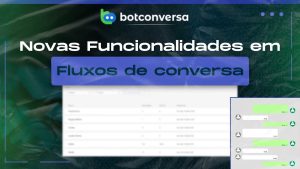6 Important Things A MuleSoft Architect Should Know

Table of Contents
Introduction
MuleSoft is a leading platform for building application networks, connecting SaaS and enterprise systems, and enabling seamless and secure communication between applications and data. As a MuleSoft architect, you are crucial in designing and implementing integration solutions for organizations. With the rise of digital transformation, the demand for skilled MuleSoft architects has increased, making it an exciting and in-demand career path.
When preparing for a MuleSoft architect interview, you must understand MuleSoft technology and best practices for designing and implementing integration solutions. This article will outline six key areas that you should focus on to ensure you’re well-prepared for your interview and can showcase your expertise in MuleSoft.
Get ready to demonstrate your knowledge of API-led connectivity, data integration, security and governance, and MuleSoft’s DevOps and deployment processes. The future of integration solutions is bright, and as a MuleSoft architect, you can significantly impact this field.
Table of Content
- Overview of Mule 4 and its architecture
- Knowledge of API-led connectivity
- Experience with Data Integration
- Knowledge of Security and Governance
- Understanding of MuleSoft’s DevOps and Deployment Processes
- Conclusion
Overview of Mule 4 and Its Architecture
As a MuleSoft architect, it’s essential to deeply understand the MuleSoft technology stack. Mule 4 is the latest version of the platform and provides several improvements over previous versions, including increased performance, simplified deployment, and improved support for cloud environments. Understanding the architecture of Mule 4 is crucial for designing and implementing effective integration solutions.
Understanding of Mule runtimes and domains
Mule runtimes are the underlying engines that process and execute Mule applications. Understanding the different types of runtimes and when to use them is crucial for optimizing performance and scalability. Additionally, knowledge of MuleSoft domains, which are logical groupings of Mule runtimes and assets, is important for organizing and managing assets effectively.
Knowledge of MuleSoft API management and Anypoint Platform
MuleSoft API management is a critical platform component and enables organizations to create, manage, and publish APIs. As a MuleSoft architect, you should have a solid understanding of the API management capabilities of MuleSoft and the Anypoint Platform, which provides a centralized view of all assets and APIs within an organization. This knowledge will enable you to design and implement effective API management strategies that meet your organisation’s needs.
Overall, understanding the MuleSoft technology stack is key to being a successful MuleSoft architect. By deeply understanding Mule 4 architecture, Mule runtimes and domains, MuleSoft API management, and Anypoint Platform, you’ll be well-prepared to tackle complex integration challenges and deliver effective solutions for your organization.
If you are interested to enrich your career as a MuleSoft Developer, then enroll in MuleSoft Certification Course.
Knowledge of API-led Connectivity
Understanding of API-led approach to integration
API-led connectivity is a fundamental aspect of MuleSoft integration solutions. As a MuleSoft architect, you should have a deep understanding of this approach and be able to explain its benefits to stakeholders. API-led connectivity creates reusable and maintainable integration solutions by using APIs to connect systems and applications. It enables organizations to unlock the value of existing assets and create new digital services by exposing them through APIs.
Knowledge of API implementation with MuleSoft
In addition to understanding the API-led approach, you should also have hands-on experience implementing APIs using MuleSoft. This includes knowledge of MuleSoft API building blocks such as API proxies, policies, and security. You should also be familiar with designing and implementing API flows, including request/response processing, error handling, and data mapping.
Best Practices in Designing and Implementing APIs
Designing and implementing effective APIs requires a thorough understanding of best practices. As a MuleSoft architect, you should be familiar with these best practices and be able to implement them in your API design. Some key best practices include designing simple, intuitive APIs that are easy to consume, ensuring API security and privacy, and using API design patterns such as caching and pagination. Additionally, you should be familiar with API versioning and understand how to manage multiple versions of an API.
Experience with Data Integration
-
Understanding of data integration and its importance in MuleSoft
Data integration is a critical component of MuleSoft integration solutions. You should be able to articulate the value of data integration and how it plays a part in providing successful integration solutions as a MuleSoft architect. Data integration involves combining data from multiple sources into a unified view, enabling organizations to make more informed decisions and improve operational efficiency.
-
Knowledge of data mapping and transformation techniques
Data mapping and transformation are key aspects of data integration. As a MuleSoft architect, you should have a solid understanding of these techniques and be able to implement them effectively. This includes knowledge of data mapping techniques such as one-to-one, one-to-many, and many-to-one mapping and experience with data transformation tools such as Anypoint DataWeave.
-
Experience with MuleSoft’s data integration tools, such as Anypoint DataWeave and Anypoint Connectors
MuleSoft provides various tools to support data integration, including Anypoint DataWeave and Anypoint Connectors. As a MuleSoft architect, you should have hands-on experience with these tools and be able to implement data integration solutions using them. This includes knowledge of how to use Anypoint DataWeave for data mapping and transformation and experience with Anypoint Connectors for integrating with a wide range of data sources and systems.
Knowledge of Security and Governance
-
Understanding of security best practices in MuleSoft
Security is a top concern for organizations implementing MuleSoft integration solutions. As a MuleSoft architect, you should have a deep understanding of security best practices and be able to implement them effectively. This includes knowledge of MuleSoft security features such as encryption, authentication, and authorization and experience with implementing security in MuleSoft integrations.
-
Knowledge of securing APIs and integrations
Securing APIs and integrations is a key aspect of delivering secure MuleSoft solutions. As a MuleSoft architect, you should have experience with securing APIs, including knowledge of security protocols such as OAuth, JWT, and SSL, as well as experience with securing integrations using MuleSoft security features.
-
Experience with governance and management of MuleSoft assets
Governance and management of MuleSoft assets are important aspects of delivering successful integration solutions. As a MuleSoft architect, you should have experience with managing MuleSoft assets, including knowledge of MuleSoft’s asset management features, such as Anypoint Exchange and Anypoint Studio. Additionally, you should have experiences with implementing governance processes, such as version control and change management, to ensure that MuleSoft assets are managed effectively.
Understanding of MuleSoft’s DevOps and Deployment Processes
-
Knowledge of MuleSoft’s deployment process and best practices
Deployment is a critical component of delivering MuleSoft integration solutions. As a MuleSoft architect, you should deeply understand MuleSoft’s deployment process and best practices, including knowledge of MuleSoft’s deployment tools and processes for deploying integrations to various environments such as development testing and production.
-
Understanding of MuleSoft’s DevOps and continuous integration/continuous deployment (CI/CD) pipeline
MuleSoft’s DevOps and CI/CD pipeline is key to delivering efficient and effective MuleSoft integration solutions. As a MuleSoft architect, you should have a deep understanding of this pipeline, including experience with implementing DevOps processes, such as continuous integration and continuous deployment, to ensure that MuleSoft integrations are deployed efficiently and effectively.
-
Experience with MuleSoft’s deployment tools, such as Anypoint Platform and Jenkins
MuleSoft provides a range of deployment tools to support the deployment of integrations, including Anypoint Platform and Jenkins. As a MuleSoft architect, you should have hands-on experience with these tools and be able to implement deployment solutions using them. This includes knowledge of how to use the Anypoint Platform for deploying integrations to various environments and experience with Jenkins for automating the deployment process.
Conclusion
MuleSoft has become a key player in the integration solutions market, providing organizations with powerful tools for connecting applications, data, and devices. As a MuleSoft architect, it’s important to have a deep understanding of MuleSoft technology and experience in delivering MuleSoft solutions.
The world of technology is constantly evolving, and MuleSoft is no exception. MuleSoft architects must stay updated with the latest MuleSoft technology and best practices. This requires continuous learning, including training and certification programs, attending MuleSoft user conferences, and staying informed about the latest MuleSoft news and trends.
Being a MuleSoft architect is a challenging but rewarding role. It requires a deep understanding of MuleSoft technology and experience in delivering MuleSoft solutions. By staying up to date with the latest MuleSoft technology and best practices, MuleSoft architects can continue to deliver successful MuleSoft integration solutions.
Author Bio:
Zaid is a Digital Marketer, and a passionate writer, who is working with Tekslate, a top global online training provider. He also holds in-depth knowledge of IT and demanding technologies such as Business Intelligence, Salesforce, Cybersecurity, Software Testing, QA, Data Analytics, Project Management, and ERP tools, etc. You can find Zaid on LinkedIn.







